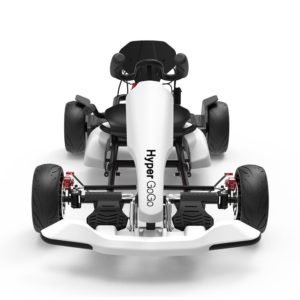Содержание
Human Resources – there are human resources modules within an ERP enterprise system. They can include the tools you use to gather and interpret data on recruiting, training, payroll, diversity management, retirement, and benefits. This is where the human resource managers come in to help monitor as they measure the key performance indicators for each employee, department, and job role.
Small scale organizations implement the framework of enterprise system to pick up far reaching access to business learning, increase worker profitability and minimize the duplication of organization information. Enterprise systems might likewise empower a business to diminish the expense of information technology and minimize the manual input of information. These enterprise system characteristics offer specific advantages, for example, the backing of cooperation, an enhanced response to the marketplace, expanded work quality and increased worker collaboration and effectiveness. Enterprise Systems designs, develops, acquires, implements and maintains UH-System-wide administrative computing applications and database management software, including myUH .
Erp Weaknesses
Considering an ES’s far-reaching strategic and organizational implications, the worst thing a company can do is to make decisions about a system based on technical criteria alone. The growing number of horror stories about failed or out-of-control projects should certainly give managers pause. Mobil Europe spent hundreds of millions of dollars on its system only to abandon it when its merger partner objected. Dell Computer found that its system would not fit its new, decentralized management model.
Exactly how long this project takes and how much it costs will depend on many factors, including deployment model, implementation strategy, complexity of the system, size of the company and resources dedicated to it. In the past, maintenance was a large expense that deterred lower-revenue businesses from adopting ERP. Not only did a company need an IT staff to handle patches, security and required system upgrades, it often had to pay the vendor or a third-party service provider for its expertise. This is less of a concern with a SaaS system because the provider takes care of all maintenance and regularly moves all customers to the latest version — and it’s all built into the subscription price. Companies concerned about maintenance should thoroughly vet a potential supplier to ensure it offers a true vendor-managed SaaS system. While most companies find that modern ERPs support their businesses “out of the box,” some firms need to add to the extensive built-in functionality.
Maximize The Reliability Of It Infrastructure Necessary For Customer Service
An organisation’s adaptability is influenced by the adaptability of its ES. An adaptable ES should allow the incorporation of changes that align with evolving business goals and unforeseen marketplace disruptions. In this work, we present an empirical study exploring current views on ES adaptability, which supports the hypothesis that ES adaptability is viewed as critical. We find that more choices in adaptable ESs are desirable and favourable, and that an adaptable ES is a critical requirement for the long-term survival of organisations. We analyse study limitations and outline the potential for conducting further refined research on ES adaptability.
It helps smooth marketing projects, accounting, human resource management, finance, and procurement. The modules in this system are interconnected and play a crucial role in the effective distribution of information. Enterprise resource planning software offers single-system solutions that integrate processes across the business. These applications allow users to interact within a single interface, share information, and enable cross-functional collaboration.
For companies that compete on cost rather than on distinctive products or superior customer service, enterprise systems raise different strategic issues. The huge investment required to implement an ES at large companies—typically ranging from $50 million to more than $500 million—need to be weighed carefully against the eventual savings the system will produce. In some cases, companies may find that by forgoing an ES they can actually gain a cost advantage over competitors that are embracing the systems. They may not have the most elegant computer system or the most integrated information flows and processes, but if customers are concerned only with price, that may not matter. Implementing an ERP solution may be frustrating because it is difficult to analyze a system currently in use and then fit the ERP model to that system.
- Like many other businesses, the North Carolina company used spreadsheets to track inventory and accounting software to record financial data.
- Previously, production could be allocated to individual orders no more than a week in advance.
- In order to operate efficiently, companies are seeking ways to improve their business processes.
- To ensure that those applications would be compatible with its ES, Compaq wrote them in the computer language used by its ES vendor.
Some enterprises have also deployed two-tier ERP, which uses a SaaS solution for parts of the business and integrates with the primary on-premises ERP. Because they were expensive to purchase, implement and maintain, early ERP systems were accessible only to large companies. Organizations can use tools to calculate estimated savings after one and three years, for instance, to find out when returns will surpass costs. ERP solutions make it easy to share information — like purchase orders, contracts and customer-support records — among teams. It knocks down walls between departments by giving employees appropriate access to real-time data on related business functions.
Customer Relationship Management
These frameworks are intended to oversee extensive volumes of critical information. These frameworks are commonly designed to provide abnormal amounts of exchange or transaction execution and data security. A key ERP principle is the central collection of data for wide distribution. With a secure and centralized data repository, everyone in the organization can be confident that data is correct, up-to-date, and complete.
Immediately, Fulton & Rourk was better able to identify accounting errors related to inventory, eliminate costs from employing third parties to evaluate their financial records, and better report financial positions. Microsoft has long been an industry leader, with many customers using multiple software applications from the company. Oracle Corp. originally supplied a relational database that integrated with ERP software developed by SAP before entering the broader enterprise market in a big way in the early 2000s. Also, menial and manual tasks are eliminated, allowing employees to allocate their time to more meaningful work. ERP software also provides total visibility, allowing management to access real-time data for decision-making.
According toOracle NetSuite“, Each ERP module is designed for specific business functions, providing the data, and supporting the processes that will help those employees do their jobs. Every module plugs into the ERP system, so the system provides a single source of accurate data, even as the business adds new modules. If the ERP system is the toolbox, the modules are the screwdriver, wrench, hammer, and other tools in the box that each has specific uses. The software is intended to solve an enterprise-wide problem, rather than a departmental problem. Enterprise-level software aims to improve the enterprise’s productivity and efficiency by providing business logic support functionality.
Scale Available Resources Up And Down As Needed
With a hosted cloud solution, a company purchases a license but runs it on remote servers managed by a third party. The servers and other hardware is often rented from the hosting company. Your data is stored in a private cloud as a separate instance of the ERP used by just one company. Your infrastructure is not shared with other organizations, which is why this is sometimes called single-tenant.
Acquire highly focused and affordable Cutting-Edge Peer-Reviewed Research Content through a selection of 17 topic-focused e-Book Collections discounted up to 90%, compared to list prices. Collection topics include Diversity, Equity, and Inclusion , Artificial Intelligence, Language Learning, Marketing and Customer Relations, Religious and Indigenous Studies, and more. Hosted on the InfoSci® platform, these collections feature no DRM, no additional cost for multi-user licensing, no embargo of content, full-text PDF & HTML format, and more. Network means the hotels, inns, conference centers, timeshare properties and other operations that Hilton Worldwide and its subsidiaries own, license, lease, operate or manage now or in the future.
BDO USA partners with enterprise software firm Unit4 – Consulting.us
BDO USA partners with enterprise software firm Unit4.
Posted: Wed, 19 Oct 2022 11:01:05 GMT [source]
An enterprise information system is a program that is designed to facilitate business process integration. Enterprise information systems are virtual platforms that allow companies to integrate different departments and business processes into a centralized system that is accessible to all employees. Using this system would replace multiple independent systems that are unable to interact with each other. For example, the enterprise system would integrate the entire sales process into one standardized location that would show pre-sales information, sales orders, inventory levels, invoices and customer service documentation. Enterprise information systems are a proven way of increasing quality, productivity, and efficiency. ERP systems are designed around a single, defined data structure that typically has a common database.
Enterprise resource planning is an integrated enterprise software application. It integrated finance, human resources, purchasing, and inventory management. This enterprise application allows corporations and businesses to eliminate duplications or inconsistent efforts during operations. Typesoftware packageEnterprise systems are large-scale enterprise software packages that support business processes, information flows, reporting, and data analytics in complex organizations. While ES are generally packaged enterprise application software systems they can also be bespoke, custom-developed systems created to support a specific organization’s needs.
What Are The Types Of Erp?
ERP systems are priced with the needs of the target audience in mind, so those built for emerging and high-growth businesses will be more affordable than those used by Fortune 500 enterprises. Third, if a connector exists, does it operate in real time and keep all necessary data flowing to and from each system? Some connectors operate in real time, others sync up systems on a daily or weekly basis.
Applied Materials gave up on its system when it found itself overwhelmed by the organizational changes involved. Dow Chemical spent seven years and close to half a billion dollars implementing a mainframe-based enterprise system; now it has decided to start over again on a client-server version. Elf Atochem’s enterprise system generated the real-time information necessary for connecting sales and production planning . As orders enter or change, the system updates forecasts and factory schedules. Another benefit of enterprise systems is their increased reliability compared to small-scale IT solutions. ERP software has become an invaluable tool for companies because it generates major time and cost savings.
A configuration table enables a company to tailor a particular aspect of the system to the way it chooses to do business. An organization can select, for example, what kind of inventory accounting—FIFO or LIFO—it will employ or whether it wants to recognize product revenue by geographical unit, product line, or types of enterprise systems distribution channel. SAP’s R/3, one of the more comprehensive and complex ES offerings, has more than 3,000 configuration tables. An enterprise system enables a company to integrate the data used throughout its entire organization. This list shows some of the many functions supported by SAP’s R/3 package.
Supply Chain Management Vs Customer Relationship Management
Inaccurate data is another sign it’s time for your first or a new ERP system. If your data is unreliable, you can’t trust the reports and insights it produces — and that’s a big problem. Executives are generally focused on outcomes — using information to achieve objectives, like increasing efficiency, reducing costs and responding to changing consumer needs or market conditions. Consider these major factors when picking the system that’s right for your business. The next generation of young workers have grown up with seamless technology that is mobile, easy to use, and always-on. No company that continues to rely purely with on-premises technology will be able to recruit top talent, regardless of age.
This knowledge is then readily available to every appropriate employee on their mobile devices, including smartphones and tablets. Enter the cloud—specifically, the software-as-a-service delivery model for ERP. When ERP software is delivered as a service in the cloud, it runs on a network of remote servers instead of inside a company’s server room. The cloud provider patches, manages, and updates the software several times a year—rather than an expensive upgrade every 5 to 10 years with an on-premises system. The cloud can reduce both operational expenses and capital expenses because it eliminates the need for companies to purchase software and hardware, or hire additional IT staff.
Customer relationship management is software that helps corporations and businesses access and present consistent customer messages. The message is customer insights; you can access them by gathering all the latest information about a lead. Since the team can quickly access data from a centralized point, they can communicate with customers effectively and on time. This minimizes delays in serving customers, thus making them satisfied and motivating them to keep coming back for more. It gives you an edge over your competitors and helps you gain a higher market share in the long run. ERP systems usually fail to achieve the objectives that influenced their installation because of a company’s reluctance to abandon old working processes.
- Original price was: $330.00.$199.99Current price is: $199.99. Check Available Discount
- Original price was: $742.65.$712.65Current price is: $712.65. Check Availability



















